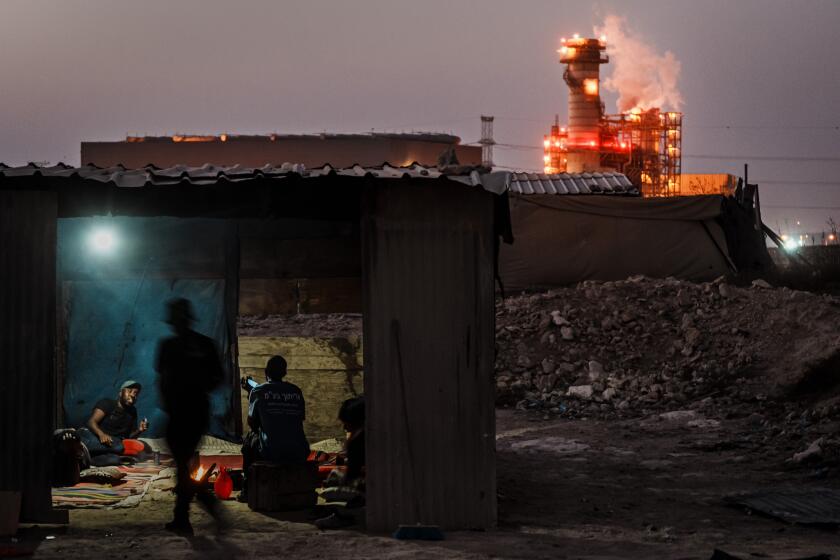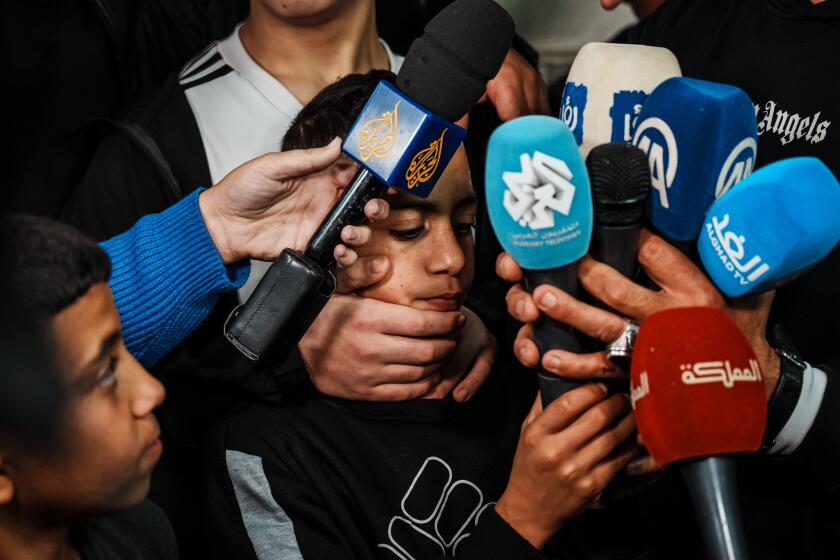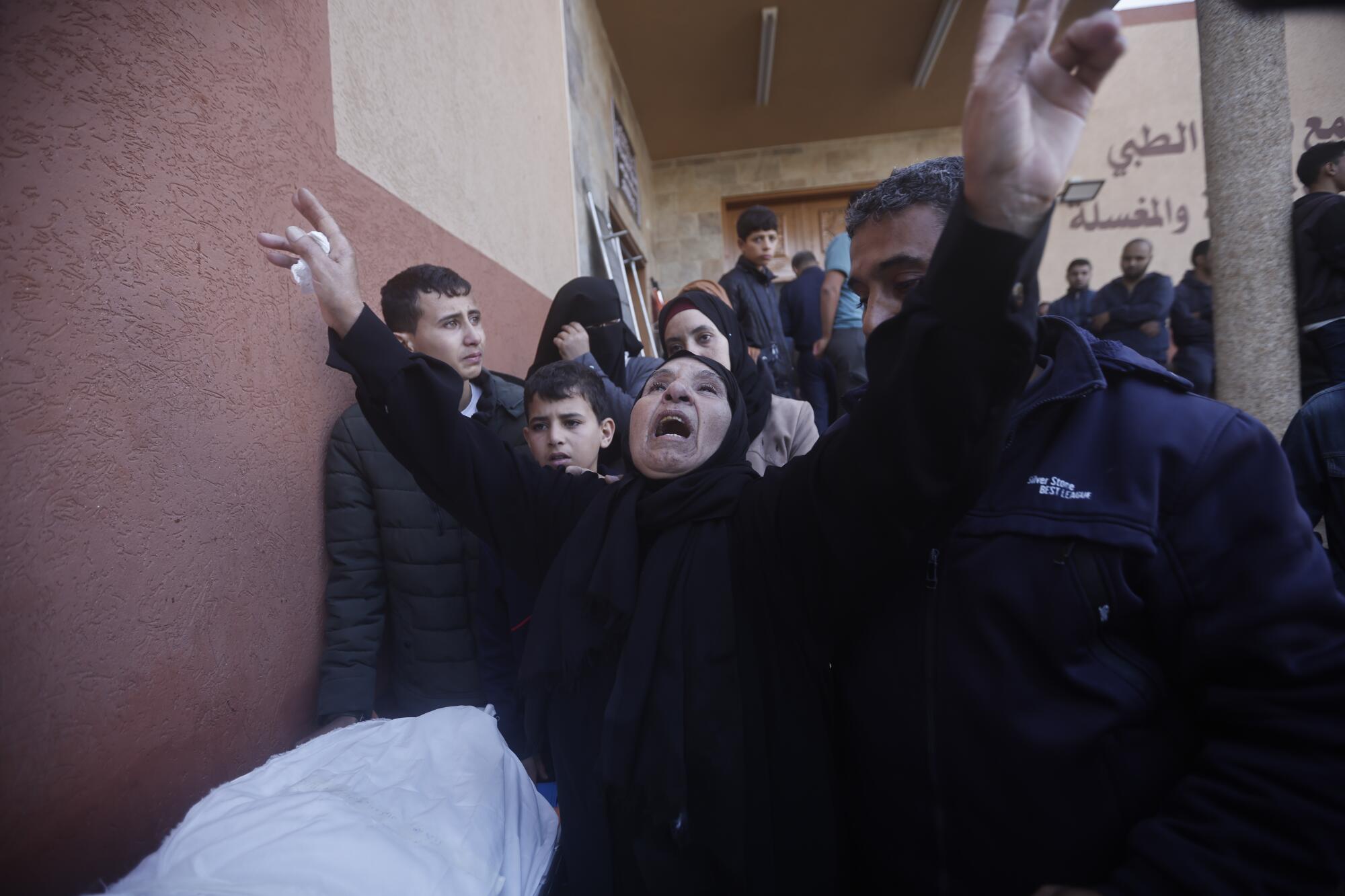
- Share via
RAFAH, Gaza Strip — Israeli troops battled Hamas militants Wednesday in the center of the Gaza Strip’s second-largest city, the military said, pressing a ground offensive that has sent tens of thousands of Palestinians fleeing to the territory’s southernmost edge and prevented aid groups from delivering food, water and other supplies.
Two months into the war, Israel’s offensive into southern Gaza was bringing to Khan Yunis the same fierce urban fighting and intensified bombardment that obliterated much of Gaza City and the north of the territory in previous weeks.
But in the south, the areas where Palestinians can seek safety are rapidly shrinking. Ahead of the assault, Israel urged residents to evacuate Khan Yunis, the childhood home of two top Hamas leaders. But much of the city’s population remains in place, along with large numbers who were displaced from northern Gaza and are unable to leave or wary of fleeing to the disastrously overcrowded far south.
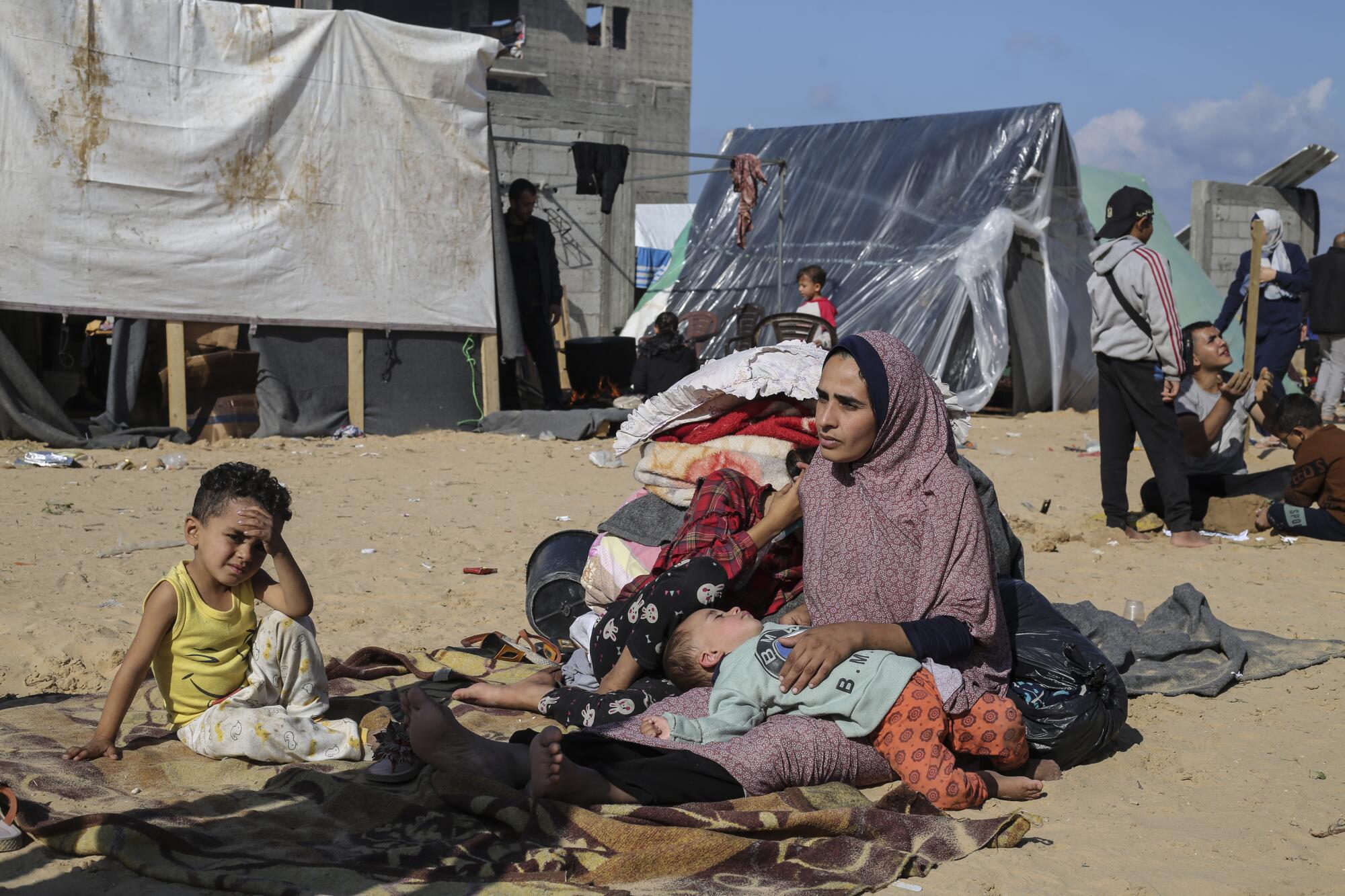
Cut off from outside aid, people in United Nations-run shelters in Khan Yunis are fighting over food, said Nawraz abu Libdeh, a shelter resident who has been displaced six times. “The hunger war has started,” he said. “This is the worst of all wars.”
The U.N. says about 1.87 million people — more than 80% of the population of 2.3 million — have already fled their homes, many of them displaced multiple times. Almost the entire population is now crowded into southern and central Gaza, dependent on aid. International officials escalated warnings over the worsening humanitarian calamity.
“Palestinians in Gaza are living in utter, deepening horror,” U.N. High Commissioner for Human Rights Volker Turk said at a news conference in Geneva. “My humanitarian colleagues have described the situation as apocalyptic.”
Israel’s campaign has killed more than 16,200 people in Gaza — most of them women and children — and wounded more than 42,000, the territory’s Health Ministry said late Tuesday. The agency has said many are also trapped under rubble. The Hamas-run ministry does not differentiate between civilian and combatant deaths.
Settler violence against Palestinians in the occupied West Bank surged even before the Gaza war. The travel ban will also apply to some Palestinians.
Israel has vowed to fight on, saying it can no longer accept Hamas rule or the militant group’s presence in Gaza after the Oct. 7 attack that triggered the war. Hamas and other militants killed at least 1,200 people, mostly civilians, and took captive about 240 men, women and children in that cross-border attack.
An estimated 138 hostages remain in Gaza after more than 100 were freed during a cease-fire last week. Their plight and accounts of rape and other atrocities committed during the rampage have deepened Israel’s outrage and further galvanized support for the war.
The refugee camp in Khan Yunis was the childhood home of Hamas’ top leader in Gaza, Yahya Sinwar, and the group’s military chief, Mohammed Deif, as well as other Hamas leaders — giving it major symbolic importance in Israel’s offensive.

Israeli military spokesman Daniel Hagari said Sinwar is “not above ground, he is underground,” but would not elaborate on where Israel believes him to be. ”Our job is to find Sinwar and kill him.”
The military said its special forces at Khan Yunis had broken through defense lines of Hamas fighters and were assaulting their positions in the city center. It said warplanes destroyed tunnel shafts and troops seized a Hamas outpost as well as several weapons caches. The Israeli accounts of the battle could not be independently confirmed.
Video released by the military showed commandos and troops moving amid sounds of gunfire down city streets strewn with wreckage and buildings with giant holes punched into them. Some took positions behind an earthen berm, while others inside a home fired out through a window, its flowered curtains fluttering around them.
Hagari said heavy fighting was also continuing in the north, in the Jabaliya refugee camp and the district of Shajaiya.
Bedouins of the Negev desert face rockets from Gaza and discrimination and arrest by Israel. They seek safety as the war energizes the far right.
Hamas posted video that it said showed its fighters in Shajaiya moving through narrow alleys and wrecked buildings and opening fire with rocket-propelled grenades on Israeli armored vehicles. Several of the vehicles are shown bursting into flames.
Its account could not be independently confirmed. But Hamas’ continuing ability to fight in areas where Israel entered with overwhelming force weeks ago signals that eradicating the militant group while avoiding further mass casualties and displacement — as Israel’s top ally, the U.S., has requested — could prove elusive.
Israel accuses Hamas, which has ruled Gaza for 16 years, of using civilians as human shields when the militants operate in residential areas and blames that for the high civilian death toll. But Israel has not given detailed accounts of its individual strikes, some of which have leveled entire city blocks.
The military says 88 of its soldiers have been killed in the Gaza ground offensive. It also says about 5,000 militants have been killed, without saying how it arrived at its count.
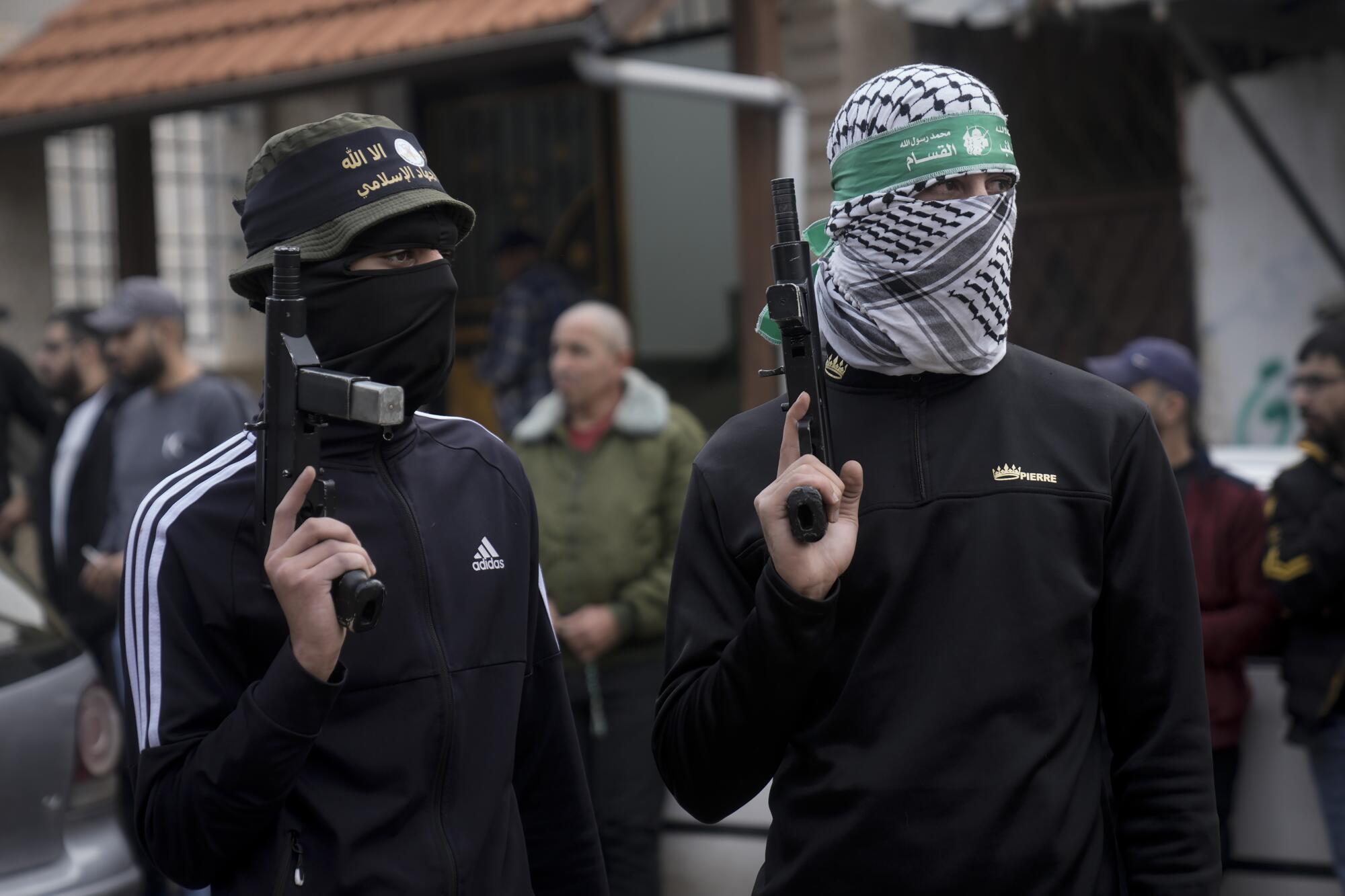
Tens of thousands of people have fled Khan Yunis and other areas for Rafah, on Gaza’s southern border with Egypt, the U.N. said. Rafah, normally home to about 280,000 people, has been inundated by more than 470,000 who fled from other parts of Gaza.
On the other side of the border, Egypt has deployed thousands of troops and erected earthen barriers to prevent any mass influx of refugees. It says an influx would undermine its decades-old peace treaty with Israel, and it doubts Israel will let them back into Gaza.
Overcrowded shelters and homes are now overflowing, residents say.
“You find displaced people in the streets, in schools, in mosques, in hospitals … everywhere,” said Hamza abu Mustafa, a teacher who lives near a school-turned-shelter in Rafah and is hosting three families.
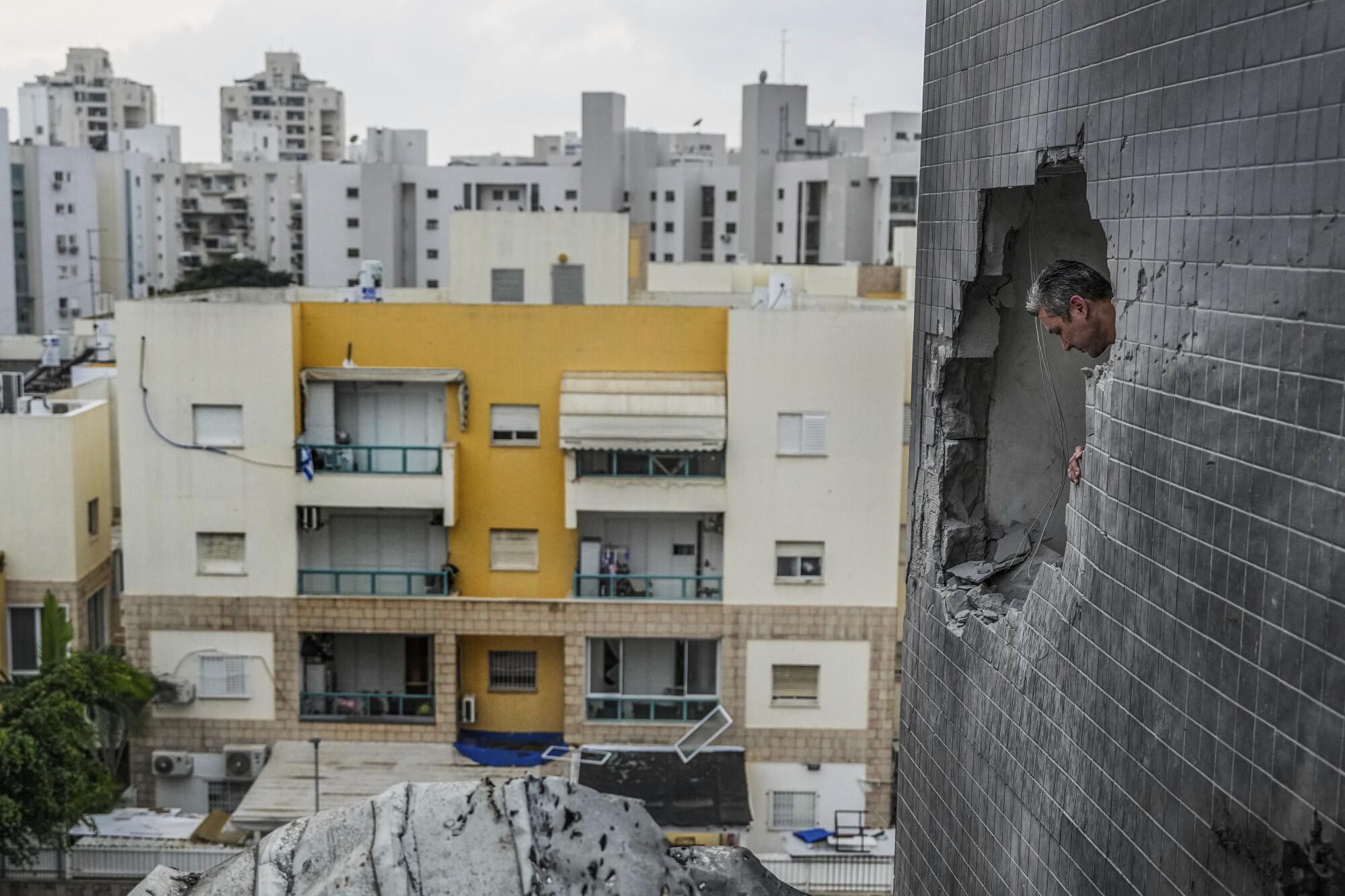
For the last three days, aid groups have been able to distribute supplies only in and around Rafah — and mainly just flour and water, the U.N.’s humanitarian aid office said. Access farther north has been cut off by fighting and road closures by Israeli forces. The World Food Program warned of the worsening of “the catastrophic hunger crisis that already threatens to overwhelm the civilian population.”
Israeli strikes continued in Rafah, where the military has told evacuees to take refuge. One strike Wednesday evening leveled a home in the town’s Shabura district, where hours earlier the military had announced a pause in operations to allow delivery of aid. A wave of wounded flowed into a nearby hospital, including at least six children. Medics carried in the limp form of one little girl, her face bloodied.
“We live in fear every moment, for our children, ourselves, our families,” said Dalia abu Samhadaneh, now living in Shabura with her family after fleeing Khan Yunis. “We live with the anxiety of expulsion.” She said diarrhea was rampant among children, with little clean water available.
A Palestinian woman who identified herself as Umm Ahmed said the harsh conditions and limited access to toilets are especially difficult for women who are pregnant or menstruating. Some have taken to social media to request menstrual pads, which are increasingly hard to find.
The recent hostage-for-prisoner swaps between Hamas and Israel have focused attention on the number of Palestinian minors imprisoned by Israel.
“For women and girls, the suffering is double,” Umm Ahmed said. “It’s more humiliation.”
Gaza has been without electricity since the first week of the war, and several hospitals have been forced to shut down for lack of fuel to operate emergency generators. Israel has barred entry of food, water, medicine, fuel and other supplies, except for a trickle of aid from Egypt.
Prime Minister Benjamin Netanyahu said his security Cabinet has approved small deliveries of fuel into the southern Gaza Strip “from time to time” to prevent a humanitarian crisis and the spread of disease. The “minimal amount” of fuel will be set by the war Cabinet, a three-member authority in charge of managing the fight against Hamas, Netanyahu said.
The decision comes as Israel faces mounting pressure from the United States to ramp up aid to Gaza.
Israel has greatly restricted shipments of fuel, saying Hamas diverts it for military purposes.
Jeffery and Keath reported from Cairo. Associated Press reporters Wafaa Shurafa in Deir al Balah, Gaza Strip, and Samy Magdy in Cairo contributed.
More to Read
Sign up for Essential California
The most important California stories and recommendations in your inbox every morning.
You may occasionally receive promotional content from the Los Angeles Times.

